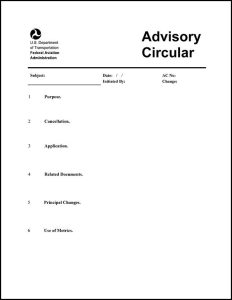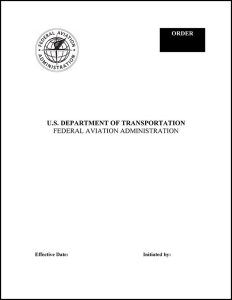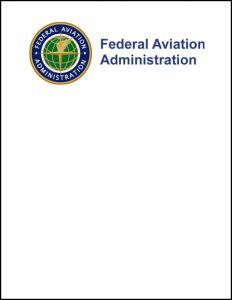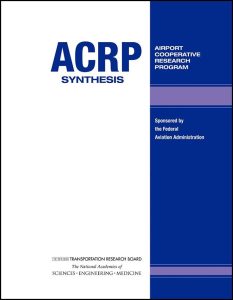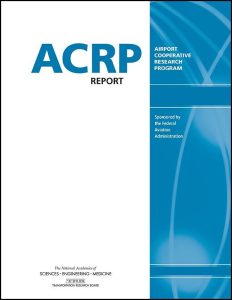To narrow the library of airside resources, use the filter boxes or airport map below or search box above.
Click an item below to expand.
Resources Matching Your Search
2022
This advisory circular (AC) contains the FAA standards and recommendations for airport design. The AC contains the following chapters: (1) Introduction, (2) Design Principles, (3) Runway Design, (4) Taxiway and Taxilane Design, (5) Aprons, and (6) Airfield Systems and Facilities. It also contains the following appendices: (A) Aircraft Characteristics, (B) Wind Analysis, (C) Jet Blast and Propeller Wash, (D) End-Around Taxiway Visual Screens, (E) General Aviation Facilities, (F) Compass Calibration Pad Survey, (G) Runway Design Standards Table, (H) Declared Distances, (I) Runway Additional Information, (J) Taxiway Additional Information, (K) Instrument Flight Procedures, (L) Approach and Departure Reference Codes, (M) Differences in Airport Design Standards and Relationship of Aircraft Characteristics to Design Components, (N) Acronyms, and (O) Index.
2020
This advisory circular (AC) contains FAA standards for the siting and installation of signs on airport runways and taxiways. Airport sign systems provide visual cues to pilots and vehicle operators, and enhance safe and efficient movement within the airfield. Elevated signs protect aeronautical surfaces and convey ground navigation information that enhances situational awareness when maneuvering on the airfield. The standards of this AC establish uniformity of sign systems throughout the National Airspace System (NAS) for consistent application and interpretation.
2020
This advisory circular (AC) contains FAA standards for markings used on airport runways, taxiways, and aprons. The runway markings addressed include landing designator, centerline, threshold, aiming point, touchdown zone, edge, threshold bar, displaced threshold, hold position, chevrons for blast pads, stopways, engineered material arresting system (EMAS), and shoulder markings.
2018
This advisory circular (AC) provides guidance and recommendations on the installation of airport visual aids, including runway and taxiway edge lighting systems, runway centerline and touchdown lighting systems, taxiway lighting systems, land and hold short lighting systems, rotating beacons, wind cones, obstruction lights, MALSF, ODALS, REILs and PAPIs.
2018
The standard specifications contained in this advisory circular (AC) relate to materials and methods used for construction on airports. Items covered in this AC include general provisions, earthwork, flexible base courses, rigid base courses, flexible surface courses, rigid pavement, fencing, drainage, turf, and lighting installation.
2020
This document provides a comprehensive guide to safe driving on the airport surface. It was created for drivers of tugs, fuel trucks, baggage carts, or other airport vehicles. It focuses on five areas—airport basics; airfield signs, markings and lighting; towered airports; non-towered airports; and aviation phraseology.
2021
This resource is a webpage that provides information on the Electronic Code of Federal Regulations (e-CFR) Title 14, Chapter I, Subchapter E, Part 77, which contains guidance on the safe and efficient use as well as the preservation of the navigable airspace.
2021
This resource is a webpage that provides information on the Electronic Code of Federal Regulations (e-CFR) Title 49, Subtitle B, Chapter XII, Subchapter B, Part 1520, which governs the maintenance, safeguarding, and disclosure of records and information that TSA has determined to be Sensitive Security Information, as defined in §1520.5.
2017
This advisory circular (AC) contains the FAA standard for the non-federal AWOS. This AC applies to anyone proposing to design, manufacture, procure, install, activate, or maintain non-federal AWOS for aviation purposes.
2013
This advisory circular (AC) provides guidance for engineers, airport managers, and the public about the design and construction of airport surface storm drainage systems, and subsurface drainage systems for paved runways, taxiways, and aprons. This AC was developed in collaboration with the Department of Defense (DOD) and incorporates the DOD Unified Facilities Criteria (UFC) draft document, Surface Drainage Design. Content includes surface hydrology; pavement surface drainage, culvert, channel, and storm drain design; drainage structures; stormwater control facilities; pipe selection bedding, and backfill, guidelines for design in the arctic and subarctic; water quality considerations and design computer programs.
2019
This advisory circular (AC) contains the FAA standards for the precision approach path indicator (PAPI) systems, which provide pilots with visual glideslope guidance during an approach for landing. The standards and guidelines contained in this AC are practices the FAA recommends to establish an acceptable level of safety, performance and operation for use in the National Airspace System (NAS) to provide visual descent guidance to a pilot on approach for landing. The lighting configurations contained in this standard are a means acceptable to the Administrator to meet the lighting requirements of Title 14 CFR Part 139, Certification of Airports, Section 139.311, Marking, Signs and Lighting.
2017
This advisory circular (AC) sets forth guidelines for operational safety in airports during construction. This AC assists airport operators in complying with Title 14 Code of Federal Regulations (CFR) Part 139, Certification of Airports. For those certificated airports, this AC provides one way, but not the only way, of meeting those requirements. The use of this AC is mandatory for those airport construction projects receiving funds under the Airport Improvement Program (AIP). Chapters include planning an airfield construction project, construction safety phasing plans (CSPP), and guidelines for writing a CSPP. Included in the appendices are a safety and phasing checklist and a construction project daily safety inspection checklist.
2017
This order establishes the siting criteria that are used in the selection of suitable locations for automated weather observing systems that provide weather information at airports and heliports. This applies to all primary and secondary weather equipment at airports, heliports, and offshore platforms. Compliance with this order is required to provide pilots with representative weather information. The standard applies to all federally owned and federally funded systems, as well as non-federal systems that are to be approved by the FAA. Other users of meteorological data exist, and to the greatest practical extent, they have been considered in the development of this order, as long as it does not adversely impact its primary aviation purpose.
2021
This resource provides a line of communication from airport sponsors to the FAA with development on or around the airport. In administering Title 14 of the Code of Federal Regulations (14 CFR) Part 77, the prime objectives of the FAA are to promote air safety and the efficient use of the navigable airspace. To accomplish this mission, aeronautical studies are conducted based on information provided by proponents on an FAA Form 7460-1, Notice of Proposed Construction or Alteration. Registration and a login is required to access the website and is available to any user who registers.
2018
This order establishes requirements for determining the site location, tower height, and cab orientation of a proposed new, replacement of the existing, and modernization of airport traffic control towers (ATCTs) where the overall structure height is changed. The order also establishes a siting process utilizing the standard Airport Facilities Terminal Integration Laboratory (AFTIL) method or the alternate siting process for qualified candidates. The order further defines a method for the reporting and approval of siting activities.
2014
This resource provides guidance and information regarding the Disadvantaged Business Enterprise (DBE) Program, in accordance with U.S. DOT, 49 CFR Part 26, to assist airport sponsors in developing a DBE program.
2016
This standard helps safeguard life and property through requirements for the proper construction and fire protection of aircraft hangars used for aircraft storage, maintenance, or related activities. This is a paid resource available in print for $54.50 and in PDF for $58.50.
2011
ACRP Synthesis 27 provides insight into common airport self-inspection practices. A comprehensive self-inspection program includes training, inspecting, reporting discrepancies and findings, follow-up, resolution and closeout, and quality control. The report will help airports in benchmarking their self-inspection programs to peer airports and practices considered successful by regional FAA personnel.
2015
ACRP Synthesis 63 explores airport fueling system operations at all sizes of airports. The report describes fueling standards and regulations as well as common operations and components, and it serves as a reference for a number of fueling processes and procedures. On-airport fueling systems and components are the main focus of the report.
2018
ACRP Web-Only Document 44, Volume 1, provides a comprehensive summary of all the requirements included in the 39 Grant Assurances applicable to airport sponsors, who are owners or operators of the airport that execute the grant agreements. The web-only document describes the requirements, identifies the actions that are required and those that are prohibited, identifies exceptions, describes the duration and applicability of the requirements, and discusses the potential consequences of non-compliance.
